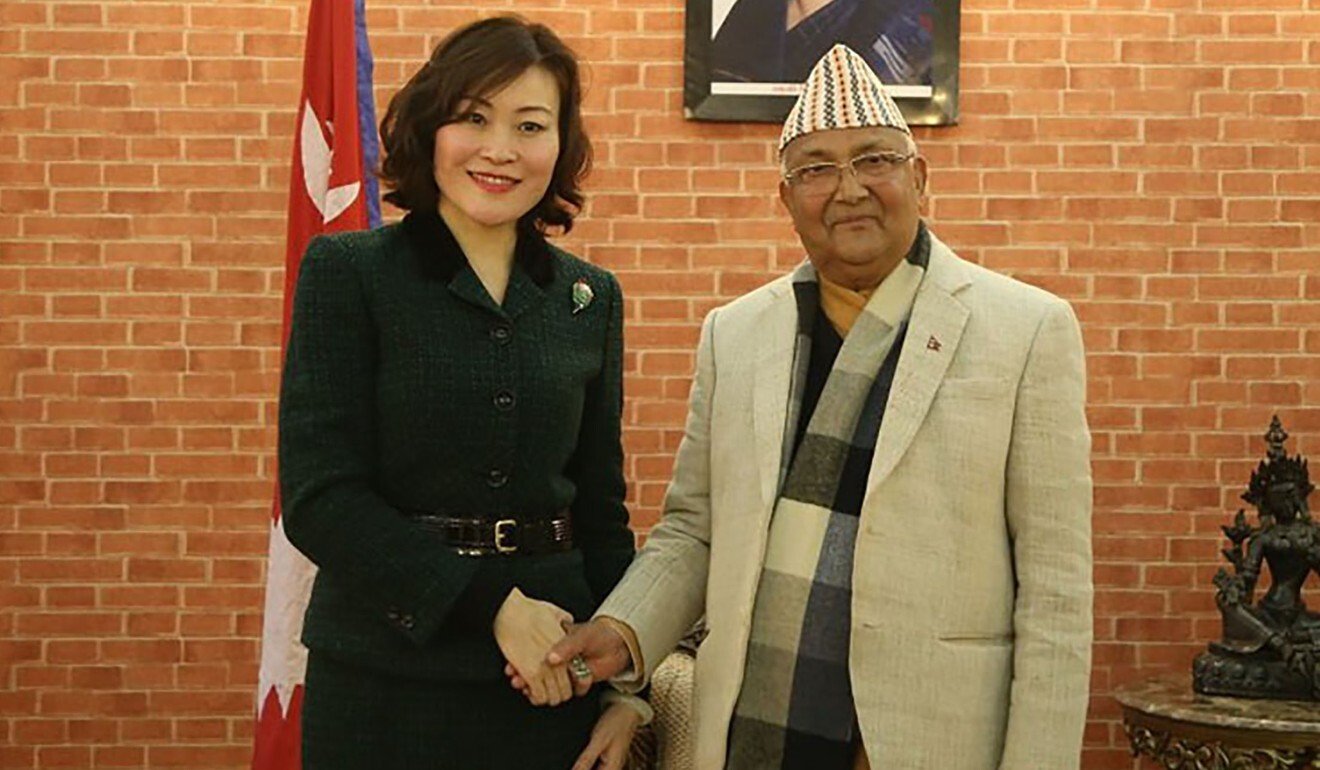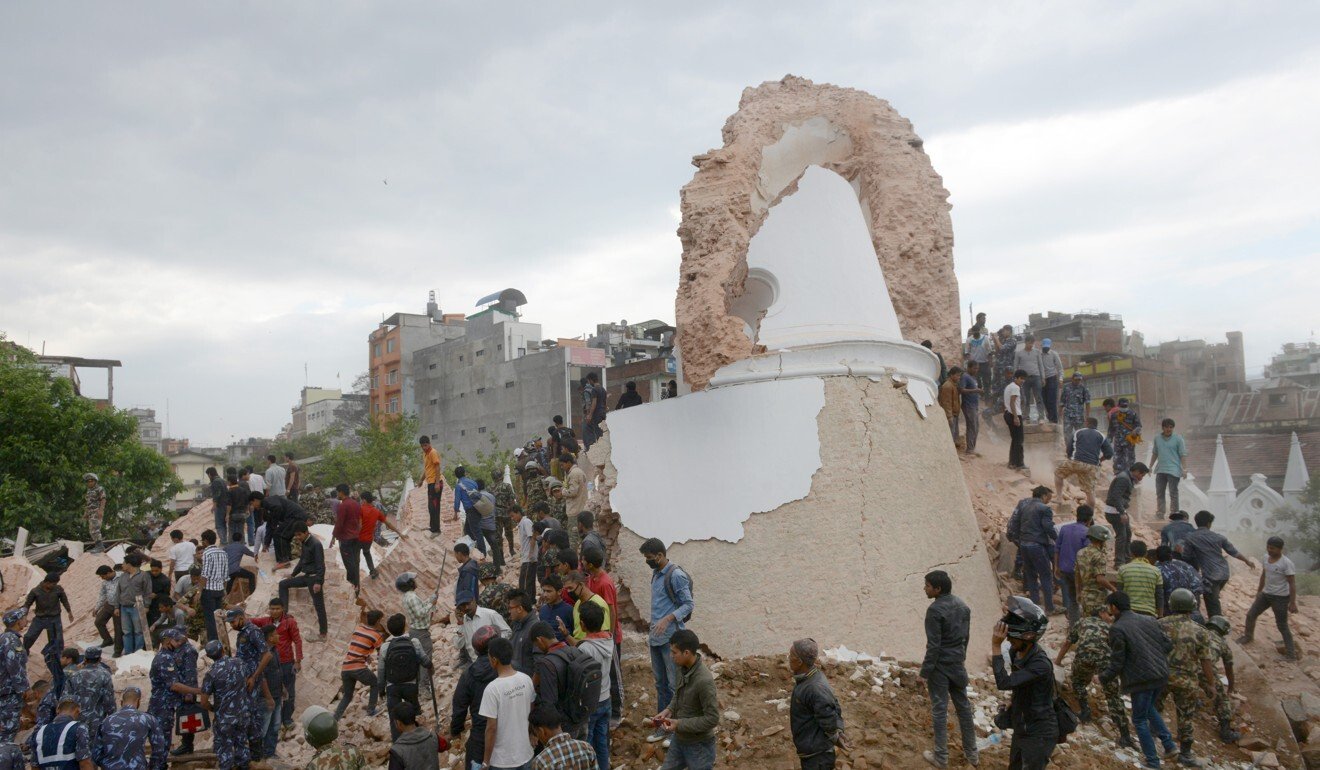
Is New Delhi using Indian media to attack Nepal as it grows closer to China?
- Indian TV news channels have recently targeted Nepal, including alleging that its leader KP Sharma Oli was ‘honey-trapped’ by ‘poison maiden’ Chinese ambassador Hou Yanqi
- Kathmandu has filed a diplomatic protest asking the Modi government to take steps against the ‘smear campaign’

“What is going on with Nepal? Have the Chinese completely taken over?”
On July 9, an Indian television anchor launched into a tirade with those words, at the opening of a 15-minute prime-time debate, tagged “China Bullies Nepal”.
Debates like these are common in the Indian television news industry, as are incendiary hashtags, lengthy tirades and screaming matches. The target of many of them over the past month-and-a-half has been Nepal.
The role of Indian television news channels has grown increasingly prominent in the rising friction between New Delhi and Kathmandu in recent weeks. Last week, the Nepal Cable TV Association said it would ban some Indian channels after they carried unsubstantiated stories alleging a romantic link-up between Nepal Prime Minister KP Sharma Oli and the Chinese ambassador Hou Yanqi.

In one report by Zee Hindustan, the reason for fraying Nepal-India ties was that Oli had “given his heart away and … found himself in a Chinese honey trap that forced him to bargain with India-Nepal ties”. The report, which has since been deleted from its YouTube channel, called Hou a “Chinese spy” and a “poison maiden”, and made allegations about Oli and Hou without providing any evidence.
Another channel, India News, on July 6 carried a report titled, “How Oli was trapped by China’s honey trap”, and alleged that Hou had used “cunning and style to fulfil Xi’s desire to break India’s friendship with Nepal”.
The unsubstantiated claims prompted an angry Nepal government to lodge a protest with India and send a diplomatic note asking it to “take steps against [the broadcast of] fake, baseless and insensitive as well as abusive” stories.
“The ill-intentioned smear campaign unleashed by a section of Indian media has deeply hurt the feelings of Nepali people and persona of Nepali leadership,” the note said.
Taking their cue, Nepal’s cable operators said they were blocking a handful of Indian news channels to show their “patriotism”.
Analysts on both sides of the Himalayan border said this had raised questions over whether the Narendra Modi government has been orchestrating adverse media coverage to counter Nepal in an ongoing territorial dispute between the two countries.
REPEATED TARGETING
The Indian TV news industry has been routinely criticised for its hypernationalism – anchors have dressed up in military fatigues and held toy guns while discussing military skirmishes with Pakistan.
In the last two months, its attention has turned towards Nepal. Tensions between the two countries have been running high since Nepal objected to India inaugurating a new road in a disputed border territory in early May.
When the objections were dismissed by the Modi government, the Oli government responded by approving a new territorial map that included areas claimed by both India and Nepal.
However, while Oli has taken potshots at India throughout the crisis – from calling the coronavirus an “Indian virus” to mocking its emblem – it is the Indian media that has been doing all the talking in the opposite direction.

On June 13, the day Nepal’s lower house of Parliament approved the map, an Indian news channel called Nepal the “latest victim” of “China’s thuggery”.
Referring to the Oli government’s move to appoint a panel to gather facts and documents to back Nepal’s claim, the Indian news report was disparaging of the move and said: “Nepal just realised that it will have to show documents to prove its claim on territories. But, the truth is, it doesn’t have any.”
On July 3, a popular Hindi television channel, Republic Bharat, alleged Oli’s “love” for China was going to prove “costly for Nepal”, and concluded that “Nepal’s people and opposition parties are in no mood to tolerate Oli”.
On July 4, the same channel called Nepal, Pakistan and China “demonic triplets” and said Nepal was “China’s puppet”. It added that Nepal-China ties were an “unholy friendship”.
Sudhir Chaudhary, the editor-in-chief of Zee News, a private channel founded by Subhash Chandra (a parliamentarian backed by Modi’s ruling Bharatiya Janata Party party), last week blamed China for the cable operators’ decision to ban Indian channels.
“As we have said, these days, all of Nepal’s decisions are taken by China. Even this decision has surely been suggested by China,” Chaudhary said, adding that Nepal was “scared” of Indian journalists and media who were “exposing” them to the world.
This kind of aggressive coverage is seen as an extension of the Indian government’s foreign policy
Deepak Adhikari, an independent journalist based out of Kathmandu, said statements like these had “rankled” Nepalis.
“There has been a constant targeting of Nepal in the Indian media, which has been very unfortunate,” he said. “We [are used to seeing] the Indian media targeting Pakistan, but now, they seem to have zeroed in on us.”
Ujjwal Prajapati, a researcher at the Centre for Media Research in Kathmandu, said coverage had crossed a line when Zee News aired the claims about Oli and Hou – a story that was “totally dramatised, defamatory, abusive [and not based in] fact”, he said.
“The general tendency of Indian news channels that have been blocked in Nepal is that they are engaged in disseminating hate, and do not understand the sensitivity of the issues that they are reporting,” Prajapati said.

ANIMOSITY LINGERS
Animosity between Nepalis and the Indian media has been lingering for years.
Shortly after the 2015 Nepal earthquake, which killed nearly 9,000 people, anger erupted towards the Indian television crews who had gone to Nepal to cover the story. Much of their coverage focused on India’s aid efforts and for days, the hashtag “Go Back Indian Media” trended on Twitter.
Regarding the most recent bust-up, the Chinese ambassador to India, Sun Weidong, last week said media from both countries must “avoid inciting antagonism”.
Adhikari said many in Kathmandu believed New Delhi had orchestrated the recent coverage.
“There is a sense here that the Indian media has capitulated before the establishment,” he said. “Hence, this kind of aggressive coverage is seen as an extension of the Indian government’s foreign policy. Since it can’t take on China, Pakistan is the punching bag for the Indian media, and Nepal is the soft target.”
Prajapati, the media researcher, pointed to how the reports broadcast by Indian TV news channels were “in line” with the Indian government’s stance. This reflected “the relationship between the media and Indian establishment”, he said.
The former head of Amnesty India, Aakar Patel, said the Modi government maintained tight control over the Indian media’s coverage.
“There is no question that the Modi government uses the media as an extension of its foreign policy. News channels receive instructions on a daily basis from Modi’s office on what it should be covering and how,” he said.
Patel, a senior journalist who has helmed various newsrooms in India, said such control was difficult to resist, pointing to the industry’s dynamics. Estimates show India has more than 400 news channels, reaching some 400 million viewers. “The Indian government is the biggest advertiser in the country, so in a competitive media space like India, it can be very tough to refuse to listen to the government.”
The coverage was having a serious effect on the ties between the two countries and Indian news channels and policymakers had not understood this, said Kanak Mani Dixit, the founder of Himal SouthAsian magazine.
“Rather than think of this as something that demeans the Nepali nation-state, have Indian policymakers sat back and thought: ‘Does this also hurt our relationship with China, because we are not only targeting the prime minister of Nepal, but the formal representative of Beijing in Kathmandu?,” Dixit said in an interview to the J-Pod podcast on Monday.
Patel said neither the media nor the government were likely to change tack soon. He said Modi and the BJP were focused on controlling the narrative domestically. “They will do whatever it takes to ensure that their image stays intact.”